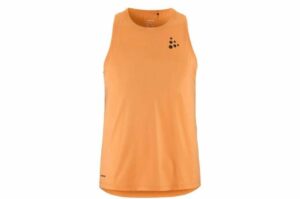“The one true way to run?”
Chris McDougall is a great advocate for running, but the shoes vs. barefoot debate is more nuanced than he acknowledges.
I’ve had a few e-mails asking what I thought of Chris McDougall’s piece “The Once and Future Way to Run” in this weekend’s New York Times Magazine, so I figure I might as well share those thoughts here.
1. Chris is a great storyteller and an engaging writer. I really enjoyed Born to Run, and I enjoyed this piece too. I think the running world is better off now that there’s greater awareness of the potential benefits of running barefoot or in minimalist shoes, and people have another option in the search for a running approach that works for them. I’d go so far as to say that McDougall has done more than anyone else in the world over the past two years to bring new people to running and create excitement about its possibilities.
2. What about the science in the article? I can’t really critique it, because there isn’t any science there — it’s all anecdote. For a thorough and balanced take on what the science does (or, more accurately, doesn’t) tell us about the quest for running perfection, read Pete Larson’s response to the article. He’s the evolutionary biologist quoted in the opening scene of McDougall’s article. Larson’s cautious middle ground is probably not what you’d expect if you’d just read McDougall’s article without knowing anything else about Larson.
3. What about W. G. George’s 100-up exercise, a century-old drill that McDougall suggests may be the “one true way” to develop perfect running form? This is where I start rolling my eyes, when he attributes a series of personal best performances to this magic drill:
“I don’t get it,” [he says at one point in the article,] “I’m four years older. I’m pretty sure I’m heavier. I’m not doing real workouts, just whatever I feel like each day. The only difference is I’ve been 100-Upping.”
Oh, please. For one thing, four years ago was, by his own account, roughly when he finally “learned to run” for the first time. If he’d been unable to run for years, and then learned to run, his improvement now compared to four years ago is likely due to something we call “training.”
Incidentally, the 100-up is a drill that modern runners call the “running A.” Virtually every competitive runner I know has done it at some point, and it’s a basic staple of every elementary school track camp. I was first introduced to it more than 20 years ago. So does that mean that McDougall is right, that it’s the secret that makes good runners fast? Of course not. It’s one of the many, many tiny ingredients that can add up to running success. There’s no secret, and no short cut.
4. The one part of the article that made me kind of angry was this passage, about McDougall’s visit to the Copper Canyon in Mexico that led to Born to Run:
I was a broken-down, middle-aged, ex-runner when I arrived. Nine months later, I was transformed. After getting rid of my cushioned shoes and adopting the Tarahumaras’ whisper-soft stride, I was able to join them for a 50-mile race through the canyons. I haven’t lost a day of running to injury since.
I actually interviewed McDougall back in 2009, shortly before Born to Run came out. And that’s not the story he told me. Here’s what I wrote then:
Long plagued by an endless series of running injuries, he set out to remake his running form under the guidance of expert mentors, doctors and gurus. He adjusted to flimsier and flimsier shoes, learning to avoid crashing down on his heel with each stride and landing more gently on his midfoot. It was initially successful, and after nine months of blissful training, he achieved the once-unthinkable goal of completing a 50-mile race with the Tarahumara. But soon afterwards, he was felled by a persistent case of plantar fasciitis that lingered for two years. “I thought my technique was Tarahumara pure,” he recalls ruefully, “but I had regressed to my old form.” Now, having re-corrected the “errors” in his running form, he is once again running pain-free.
I’m in New York right now, and won’t be back home until Monday night, otherwise I’d see if I can dig up my actual notes from the interview. But I remember McDougall telling how stressed out he’d been, because he’d spent all this time working on a book about the “right” way to run — but as the publication date loomed ever nearer, he’d been chronically injured for two years. It was only shortly before publication that he was able to get over the injuries and start running again.
So does this prove that barefoot running is a sham? Of course not. Injuries happen, with or without shoes. But it points to a fundamental dishonesty in the way the story is being told. He’s not disinterestedly sharing with us the results of an experiment he performed on himself; he’s deploying all his rhetoric to make as convincing a case as possible for one side of an argument that (as Pete Larson explains) is much more nuanced than he pretends. I’m not a big fan of “science by anecdote” under any circumstances — but if you’re making up the anecdotes, then what have you got left?

